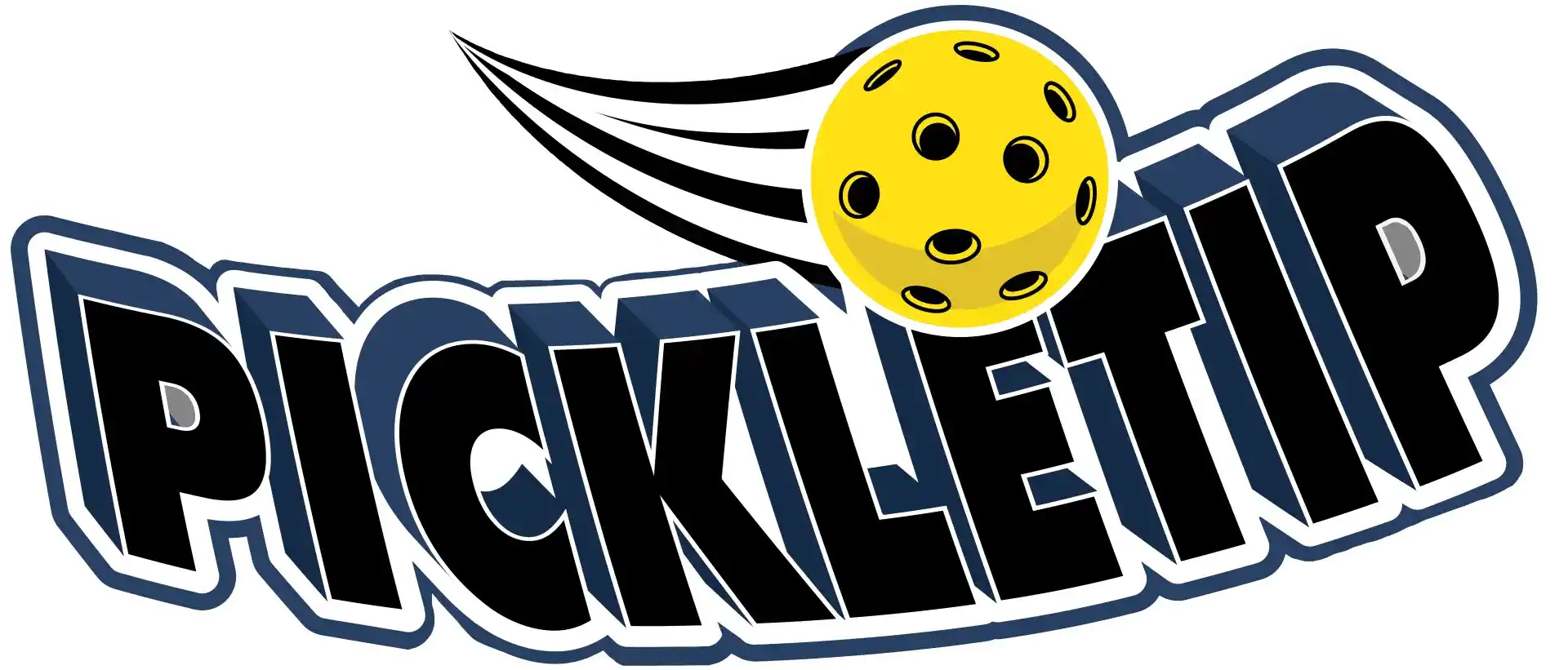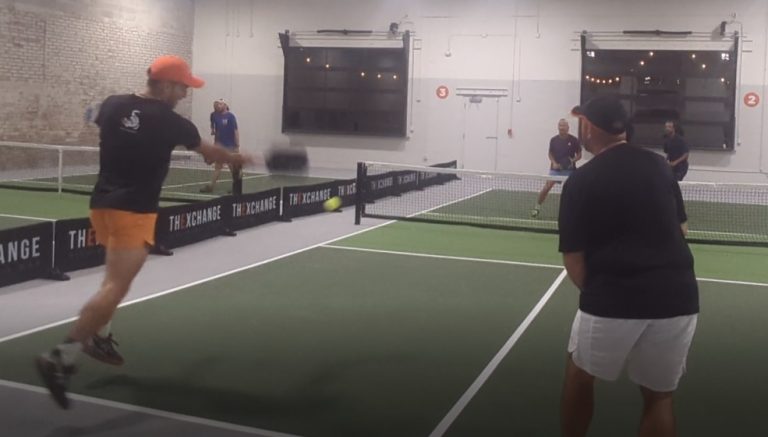Pickleball Serving Mistakes
5 Pickleball Serving Mistakes & How to Fix Them
Pickleball, a fun and social sport that combines elements of tennis, badminton, and ping-pong, has grown in popularity over the years. As players of all ages and skill levels join in, it’s essential to recognize and address common serving mistakes to improve overall performance.
In this article, we’ll explore five common pickleball serving mistakes and offer tips on how to fix them, so you can enjoy the game and make the most of your time on the court.
1. Faulty Footwork and Body Positioning
One of the most common mistakes made during pickleball serves is incorrect footwork and body positioning. If your feet are too close together or too far apart, you may struggle to maintain balance and generate power during your serve. Additionally, improper body positioning, such as leaning too far forward or backward, can result in a weak or inaccurate serve.
How to Fix It
To correct this issue, begin by practicing a proper stance. Place your feet shoulder-width apart, with your front foot pointed towards the net and your back foot slightly angled. Bend your knees and keep your weight centered. Engage your core and maintain a straight but relaxed posture, ensuring that your shoulders remain square to the net. Regularly practicing this stance will help you build muscle memory and ensure proper footwork and body positioning during your serves.
2. Inconsistent Ball Toss
An inconsistent ball toss can wreak havoc on your pickleball serve. If your toss is too low, too high, or off to one side, it becomes challenging to make clean contact and execute an accurate serve.
How to Fix It
To improve your ball toss, focus on a smooth and consistent motion. Hold the ball with your fingertips and extend your tossing arm in front of you. Release the ball gently, aiming for a height just above your paddle’s reach. Practice tossing the ball in the same spot, so you can consistently make contact and develop a reliable serve. Remember that practice makes perfect, so take the time to hone your toss and watch your serve improve.
3. Hitting the Ball Too Hard or Too Soft
Finding the right balance of power and control in your pickleball serve can be a challenge. Hitting the ball too hard can lead to missed serves and lost points, while hitting it too softly may result in an easily returned serve, putting you at a disadvantage.
How to Fix It
To find the right balance, practice varying your serve’s power and aim for a mix of deep and short serves. Focus on using your whole body to generate power, not just your arm. This includes engaging your core, transferring weight from your back foot to your front foot, and following through with your paddle. As you experiment with different levels of power, you’ll discover the optimal amount of force to use in various game situations.
4. Poor Paddle and Grip Technique
Your paddle and grip technique play a significant role in the effectiveness of your pickleball serve. An improper grip can lead to a lack of control, while poor paddle positioning can result in off-target serves.
How to Fix It
To improve your grip, hold the paddle with a “shake hands” grip, keeping your fingers wrapped around the handle and your thumb resting along the back. Avoid gripping the paddle too tightly, as this can limit your wrist movement and reduce control.
For optimal paddle positioning, ensure that your paddle face is slightly open (tilted upwards) during the serve, enabling you to generate lift and clear the net. Practice maintaining this paddle position throughout your serving motion for a more consistent and accurate serve.
5. Lack of Variety in Serves
Using the same serve repeatedly can make you predictable and easy to defend against. Opponents will quickly adapt to your patterns, making it difficult for you to win points.
How to Fix It
To keep your opponents guessing, incorporate a variety of serves into your repertoire. Practice different types of serves, such as the high, deep serve; the short, low serve; or the slice serve, which adds spin to the ball. By mixing up your serves, you’ll keep your opponents off-balance and create more opportunities to score points.
Identify Pickleball Serving Mistakes
Pickleball is a fantastic sport for players of all ages and skill levels, but it’s essential to recognize and address common serving mistakes to improve your game. By focusing on your footwork, ball toss, power control, paddle technique, and variety of serves, you’ll be well on your way to becoming a more formidable player on the court. Remember, practice makes perfect, so dedicate time to working on these aspects of your game and watch your pickleball skills soar.
Frequently Asked Questions
What are the basic rules of pickleball serving?
The basic rules of pickleball serving are:
- The serve must be executed underhand, with the paddle contacting the ball below the server’s waist level.
- The server must stand behind the baseline and within the correct service box, which is determined by the score (odd or even points dictate which side to serve from).
- The server’s feet must not touch the court or the lines until after the ball has been struck.
- The serve must be hit diagonally, crossing the non-volley zone (also known as the kitchen) and landing in the opponent’s service court.
- The serve cannot touch the non-volley zone lines or the net, and it must clear the non-volley zone before landing in the receiving court.
- Only one serve attempt is allowed, except in the case of a “let” serve, where the ball touches the net but still lands in the correct service court, in which case the server is allowed another attempt.
How can I improve my pickleball serve accuracy?
To improve your pickleball serve accuracy, focus on:
- Practicing proper footwork and body positioning.
- Developing a consistent ball toss.
- Controlling the power of your serve.
- Refining your paddle and grip technique.
- Incorporating a variety of serves to keep opponents guessing.
What is the proper grip technique for pickleball serving?
The proper grip technique for pickleball serving is the “shake hands” grip. Hold the paddle handle as if you were shaking someone’s hand, with your fingers wrapped around the handle and your thumb resting along the back. Avoid gripping the paddle too tightly, as this can limit wrist movement and reduce control.
How do I add spin to my pickleball serve?
To add spin to your pickleball serve:
- Experiment with different grips, such as the Eastern or Continental grip, which can help generate spin.
- Adjust your paddle angle and contact point on the ball, aiming for the side or under the ball to create topspin or sidespin.
- Focus on a smooth, brushing motion as you strike the ball, rather than a flat, direct hit.
- Practice various types of spin serves, like the slice serve or topspin serve, to improve your technique and control.
Can you give examples of different types of pickleball serves?
Examples of different types of pickleball serves include:
- High, deep serve: Aim for the back of the opponent’s court with a high trajectory, forcing them to move back and return the serve defensively.
- Short, low serve: Target the front of the opponent’s court, keeping the ball low and making it difficult for them to attack the serve.
- Slice serve: Add sidespin to the ball by striking it with a brushing motion, causing the ball to curve and bounce unpredictably.
- Topspin serve: Strike the ball with an upward brushing motion to generate topspin, making the ball dip quickly and bounce higher, challenging the opponent’s return.
- Power serve: Utilize your whole body to generate force, aiming for a fast, flat serve that’s challenging for the opponent to react to.
By understanding and addressing common pickleball serving mistakes, you can significantly improve your game and increase your chances of success on the court. Remember, practice is key to refining your skills, so dedicate time to working on these areas and watch your serving abilities improve over time.








One Comment